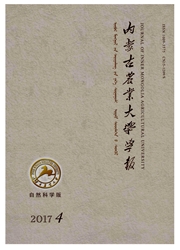

 中文摘要:
中文摘要:
对退化草原自然恢复演替过程植被变化的研究,是认识其恢复过程、机理、探讨恢复的限制因子和进一步制定快速、低投入生态恢复措施的基础。通过对内蒙古典型干草原地带退化草原〔冷蒿(Artemisia frigida)、百里香(Thymus serpyllum)和糙隐子草(Cleistogenes squarrosa)等为主〕禁牧8a的恢复过程研究表明:在退化草原群落自然恢复过程中,植物高度上升;植被盖度和生物量增加;物种数先增加后降低逐渐趋于稳定。群落的物种多样性和均匀度先明显增长后趋于平缓稍微有所下降,物种丰富度和优势度先增加后减少再增加再减少,这一变化与该区草原植被特质及人为干扰活动有关。即在禁牧初期,一些1、2a生植物的侵入,以及退化群落中建群种、优势种得以优先恢复,所以植物群落各特征都呈增长趋势;而随着禁牧年限的增长,草原群落结构趋于稳定,各植被生态特征变化都呈平稳波动。
 英文摘要:
英文摘要:
Studied vegetation change of the degraded grasslands can provide knowledges on the restoration processes and mechnisms,reveal the factors liminting restoration,and is further a base for making ecological measures for fast restoration with the lowest input.The natural restoration of a degraded grassland dominated by Artemisia frigida,Thymus serpyllum and Cleistogenes squarrosa were researched in the Xilamuren dry-grassland zone,Inner Mongolia.Tresults showed that,through eight years banning grazing,the height of grassland community greatly increased;and its coverage,biomass and species had an increase,but species had a decrease in banning grazing five years.The species diversity and community evenness had a marked increas at first,and then a decrease;species richness and ecological dominance had a complex wavy change,the reason of this change was the grassland feature and people actions.Early in the banning grazing,intrusion of some annual and biennial plants and restoration of dominant species made plants community feature had an increase.Banning grazing seven years later,structure of the community tends to be more stable.
 同期刊论文项目
同期刊论文项目
 同项目期刊论文
同项目期刊论文
 期刊信息
期刊信息
